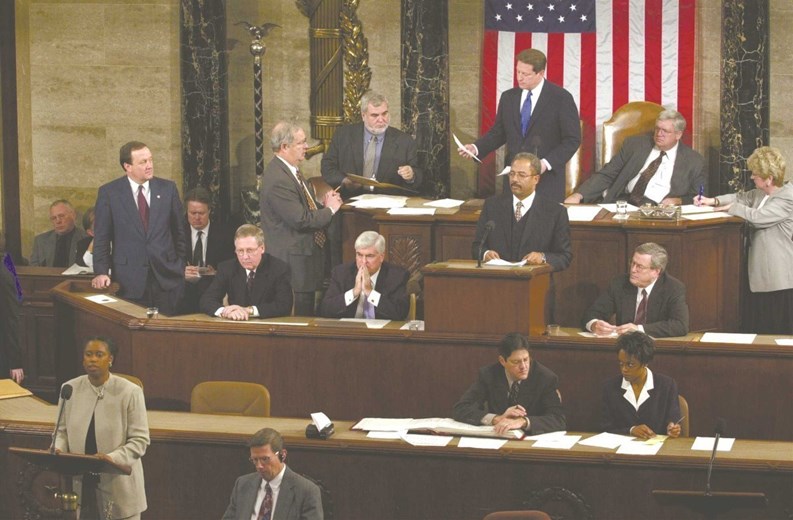Recent developments, both legislative and environmental, have led to considerable changes in the New England insurance marketplace. And such changes, as managers know, often lead to added paperwork, confusing requirements, and tricky legal questions for condo boards. While many new insurance products—such as the heavily-hyped “terrorism coverage”—have failed to catch on for the condo market, modifications in traditional coverage have altered the insurance picture in ways previously unseen.
Many insurance insiders now see condos as liabilities in the wake of the Great Recession. And that, in turn, presents problems for management. Although unit owners pay reserve fees on an ongoing basis, insurers fear some managers may defer maintenance in a bad economy. When that happens, say experts, condo properties become a bad risk, producing losses that are passed on to condo associations. “We’re starting to see some of the companies’ loss ratios become unprofitable, and when that happens you usually start seeing the big premiums,” says Luke Sevigney, Elite Condominium Program manager at Sevigney-Lyons Insurance with offices in New Hampshire and Maine. “They’re being a lot stricter on claims. When you’re marketing a condo association, they’re really scrutinizing the loss runs and they’re doing a lot of engineering on sprinkler systems and stuff to make sure everything’s up to par.”
Insurance professionals say the recent housing bubble has led to confusion for managers and agents alike. “I think the concern for insurance companies is that often times condo associations may feel that the value of those condominiums have come down in price,” says Loretta Worters of the Insurance Information Institute (I.I.I.). “So a lot of associations tend to think they can reduce their amount of insurance because it’s based on the value, when, in fact, the cost of insurance is based on rebuilding costs.” And the confusion doesn’t end there, explains Sevigney, whose Wells, Maine-based firm has guided many associations through additional costs and increased scrutiny in the wake of the housing crisis. “It’s made it a nightmare, to be quite honest. In the past we would get requests for certificates and a normal certificate would do it. Now they’re really scrutinizing everything—especially in terms of the employee dishonesty coverage. That was a coverage they were never concerned about up until about a year ago. Now we’re getting requests from some of these companies to have fidelity bonds or employee dishonesty coverage in amounts in excess of $500,000. It’s an additional cost to these condo associations.”
More Flood Woes on Tap
Flood insurance is another area receiving increased scrutiny in recent months. “They used to be a little bit lenient on that,” Sevigney says. “They’re now asking for huge amounts of flood insurance coverage for these associations—in many cases, in excess of what the actual replacement cost is on the structure.” In fact, the current marketplace has led some lenders to demand flood insurance coverage totaling $250,000 per unit. “If you have a small, four unit complex—each unit is 500 square feet—they can request up to a million dollars in coverage…and hold up closings.”
Adding to flood-related insurance woes, recent FEMA rezoning throughout much of the Northeast has forced many condo properties to deal with flood insurance issues for the very first time. “[Some] units have mortgages on them, and when FEMA comes in and changes these flood zones…the mortgage companies call up and say they need to have a flood insurance policy. Now, from a reconstruction standpoint, these individuals buying flood insurance policies usually doesn’t make a lot of sense…if you have only one unit [covered] in a ten unit building,” Sevigney notes. “So, in a lot of cases, the whole association will have to buy a policy. And flood insurance is expensive. From a standpoint of cost, in a lot of cases, the flood insurance is four times as expensive as all of the other things combined.”
“Disaster losses along the coast are likely to escalate in the coming years,” says Worters, “in part because of huge increases in development. One catastrophe modeling company predicts…losses will double every decade or so due to growing…density and more expensive buildings.” In fact, recent Census Bureau statistics indicate that nearly 35,000,000 people were seriously threatened by Atlantic hurricanes in 2006, up from 10,000,000 in 1950. Such statistics have made many insurers reluctant to cover coastal properties. And those who do now frequently impose costly wind deductibles. While some wind-weary states like Florida have legal limits on wind deductible percentages, most New England states have no such limitations, leaving insurers free to impose any deductible they like. “In a lot of cases,” explains Sevigney, “we have some of these buildings that are ten or twenty million dollar buildings that have a two percent wind deductible on it. That’s a huge deductible. That is not a deductible on the loss. It’s a deductible on the structure.”
High-Risk Business
Wind/hail deductibles—deductibles relating to damage by traditional thunderstorms—and the more-specific “hurricane deductibles” are rapidly becoming the most significant cost concerns in the aftermath of a wind-related disaster. Though the steepest wind deductibles will top out at five percent, experts say hurricane deductibles can rise even higher in risk-prone areas. The amount an association will pay depends on the property’s insured value and the "trigger" selected by the insurance company. Though some remaining insurers do offer traditional deductible-based wind coverage in exchange for higher premiums, such terms are increasingly rare in New England’s coastal areas.
“Many insurers have reduced the number of policyholders they insure in high-risk areas, says Worters. “Some insurers, who have too much exposure in an area, may decide to not write in that area. While others, who have less exposure, will take up the slack.” Sevigney fears the market may eventually run dry in terms of its ability to cover coastal condominiums. “It’s become an issue,” he says. “The ones that are writing these things are writing them at huge premiums. A lot of companies now refuse to write any thing with in a mile of the coast and that’s increasing rapidly—the distance margin.”
The trigger for hurricane deductibles vs. wind deductibles—the point at which the more severe hurricane deductibles will apply to a wind-damaged property—varies widely by state and company. But regardless of state, experts say most triggers have common characteristics: they are typically tied to the issuance of National Weather Service warnings, tend to vary based on the hurricane’s “category,” and often remain in effect after the storm has passed. While wind and hurricane deductible tolerances tend to be similar throughout New England, there are noteworthy exceptions. Rhode Island, for example, now expressly prohibits standard windstorm deductibles, but allows the imposition of hurricane deductibles not exceeding five percent. Connecticut, long considered a progressive state in the realm of condo law, has imposed perhaps more restrictions on condo insurers than any other New England state. Connecticut insurers are required to offer discounts to properties with storm shutters, but may not deny coverage to properties that lack them. New coastal-area policies written since 2008 may not impose hurricane deductibles exceeding two percent, and requires those deductibles only apply to damage incurred during a hurricane warning or in the immediate 24 hours that follow.
Deductible restrictions are hardly the only insurance-related changes to Connecticut’s condo law. “There’s so much in the works right now being considered by the Connecticut General Assembly,” says Certified Insurance Counselor Rich Bouvier of West Hartford-based Bouvier, Beckwith & Lennox. “I could write a 1,500-word article and barely scratch the surface.” Among the most controversial pending legislation is Connecticut’s HB 6620, “An Act Concerning Condominiums and Common Interest Ownership Communities,” which would limit the authority of condominium boards and clarify existing insurance-related condo law. The complicated and controversial bill seeks to address several condo-related issues in one sweeping piece of legislation.
Under recently-passed Connecticut law, condo associations consisting of twelve units or more are required to obtain insurance for all property contained within common walls, including individual condo units. Coverage on such units must include improvements made by unit owners after the time of purchase, unless specific provisions are made to opt out. New provisions within HB 6620 would seek to clarify existing law, expressly excluding stand-alone units. The bill further stipulates that any community-wide expense, incurred due to the willful misconduct of a unit owner, may be charged solely to that individual condo dweller.
Regardless of your state, the simplest advice is still the best: be prepared, and encourage your individual unit owners to be prepared, as well. Management companies should proactively encourage the purchase of HO-6 coverage for all unit owners—even those who aren’t required to carry it. “Speak with your agent,” says Worters. “Also look at what your bylaws and rules are. Make sure you have enough coverage.” Good advice in any season.
Matthew Worley is a freelance writer and a frequent contributor to New England Condominium.







Leave a Comment